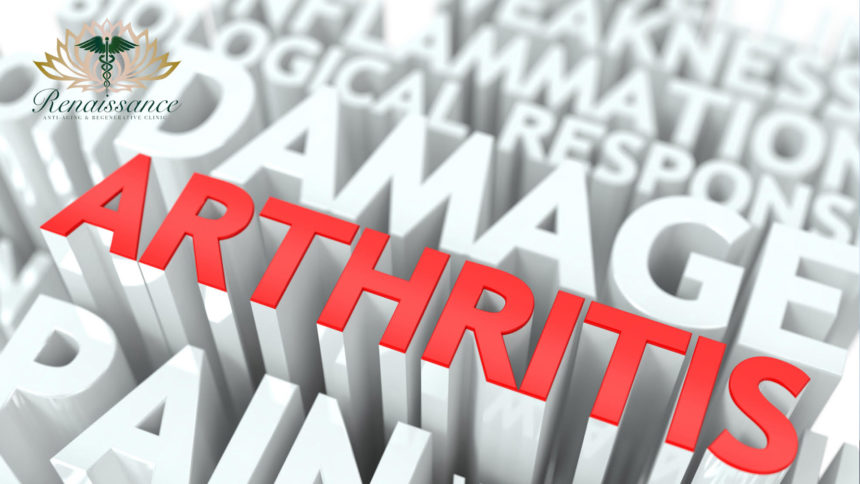What’s rheumatoid arthritis?
Rheumatoid arthritis (RA) is an autoimmune disease that can cause joint pain, inflammation, and damage throughout your body.
The joint damage that RA causes usually happens on both sides of the body.
So, if a joint is affected in one of your arms or legs, the same joint in the other arm or leg will probably be affected, too. This is one way that doctors distinguish RA from other forms of arthritis, such as osteoarthritis (OA).
Rheumatoid arthritis symptoms
RA is a chronic disease marked by symptoms of inflammation and pain in the joints. These symptoms and signs increase during periods known as flares or exacerbations. Other times are known as periods of remission — this is when symptoms can disappear completely.
RA symptoms commonly affect joints in the hands, wrists, and knees, but can also affect tissues and organs throughout the body including the lungs, heart, and eyes.
Symptoms can include:
- pain or aching in more than one joint
- stiffness in more than one joint
- tenderness and swelling in more than one joint
- the same joint symptoms on both sides of the body
- loss of joint function and deformities
- fatigue
- low-grade fever
- loss of appetite
- weakness
Symptoms can vary from mild to severe. It’s important not to ignore your symptoms, even if they come and go. Knowing the early signs of RA will help you and your healthcare provider better treat and manage it.
Signs and Symptoms of Rheumatoid Arthritis.
Rheumatoid arthritis (RA) is an autoimmune disorder that causes the chronic inflammation of joints.
RA tends to begin slowly with minor symptoms that come and go, usually on both sides of the body. These symptoms progress over a period of weeks or months.
Symptoms of this chronic condition vary from person to person and can change as time goes on. Bouts of RA symptoms are called flare-ups. Inactive periods, when symptoms are less noticeable, are called remission.
Early stage symptoms
While RA can affect anyone, it most commonly presents between the ages of 30 and 50 and more often in women. The early stage symptoms of RA don’t always include swelling and redness in the joints, but there can be subtle signs that something is up. Some of the early stage symptoms include:
- tenderness and pain in certain areas of your body
- a noticeable increase in fatigue (it takes energy for the body to deal with inflammation)
- weakness in certain areas of your body that weren’t there before
- generally feeling unwell
Later stage symptoms
Once RA inflammation has been active in your body for a period of weeks or months, you’ll begin to notice more obvious signs that something is up.
Swelling, redness, and warmth in joints
Rheumatoid arthritis attacks the lining of your joints, and when this inflammation flares up, your joints may become red, and feel warm to the touch. They might also swell.
Fatigue
Because it takes energy for your body to fight inflammation, you may notice a marked increase in fatigue and tiredness while doing the same activities you’ve always done.
If this fatigue lasts more than a few weeks — even if you don’t notice any other symptoms — you could be dealing with an RA flare.
Fatigue is sometimes accompanied by an overwhelming “I don’t feel good but don’t know why” sensation or even depression.
Morning stiffness
Morning stiffness is one of the main symptoms of many types of arthritis, including RA.
If certain joints feel stiff when you first wake up and that stiffness lasts longer than 30 minutes, you could be dealing with an RA flare.
It’s common for joints to feel more mobile after prolonged activity.
General joint pain and stiffness
In addition to morning joint stiffness, you may also experience general joint stiffness throughout the day, especially after a period of inactivity.
Some of the first areas RA stiffness typically affects are the wrists and certain joints in the hands and feet, but it’s also possible to experience pain and stiffness in your knees or shoulders. Usually, both sides of your body will be affected.
Fever
When accompanied by other symptoms like joint pain and inflammation, a low-grade fever may be an early warning sign that you’re having an RA flare.
Numbness and tingling
Inflammation of tendons can create pressure on your nerves. This may cause numbness, tingling, or a burning feeling in your hands referred to as carpal tunnel syndrome.
Decrease in range of motion
Inflammation in your joints can cause tendons and ligaments to become unstable or deformed. If the disease progresses without treatment, you may find yourself unable to bend or straighten some joints.
Although your range of motion may also be affected by pain, engaging in regular, gentle exercise can help ease the ache and even allow for a bit more movement.
Other symptoms of rheumatoid arthritis
There are a few other RA symptoms that affect more than just your joints. These include:
- loss of appetite
- dry eyes and mouth (caused by a related symptom, Sjogren’s syndrome)
- rheumatoid nodules, which are hard lumps that grow beneath the skin in places like the elbow and hands
- weight loss
- chest pain
- nerve or skin damage

